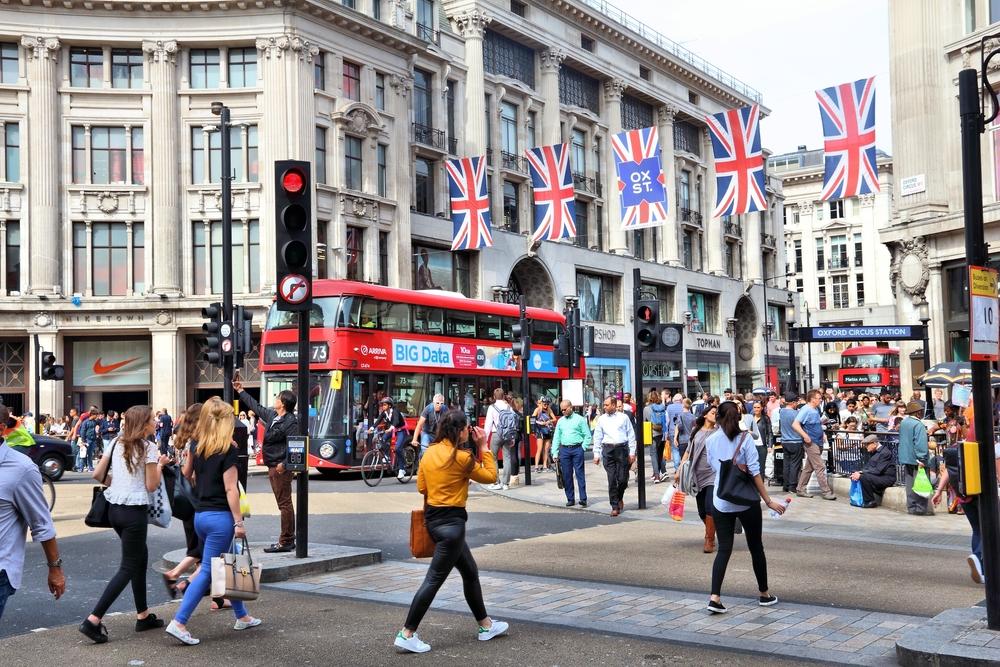The Office of National Statistics released data on Thursday outlining the latest retail sales statistics for November. Despite the well reported dire condition of the UK high street, it became apparent that retail sales increased by 0.4% for the three months to November on the back of growth in non-food stores and online retailing. Indeed, retailers reported strong growth in November as a result of Black Friday.
ING economist James Smith warned Reuters that these positive statistics must be treated “with some caution”.
“Whatever the case, it seems clear that the Christmas trading period has been a particularly challenging one for retailers,” he added.
These statistics should indeed be treated with care and assumptions regarding the revival of UK retail should not be made.
More and more retailers are releasing updates that they are suffering. On Monday, ASOS shares crashed 40% following an alarming profit warning issued during such an unexpected period – the run-up to Christmas. Seeing as ASOS is an online retailer, this indicates a sector-wide crisis rather than exclusively the UK high street.
Not to mention the harrowing 99% drop in John Lewis profits reported back in September or warnings released by Primark, M&S, Bonmarche and Sports Direct. The list of retailers struggling goes on, and what is strikingly familiar to each set of disappointing financial results is the far too often blamed Brexit uncertainty.
Rather than taking the easy option of blaming Brexit, there are other factors that might have contributed to the disappointing results issued by retailers.
Smarter shopping habits
One factor that is perhaps underestimated is the increase in smarter shopping habits. Essentially, shoppers are learning when to shop. What this means is that consumers are waiting for a specific sale to acquire a product for a cheaper amount, instead of paying the full retail price.
This means waiting for sales. For example, if a consumer wishes to purchase an item in November, a smart shopper will wait until Black Friday to make the purchase. Shoppers know that retailers like ASOS will knock a certain percentage off of their products. In 2018, ASOS offered 20% off of all lines and in 2017 this figure was 30%. Therefore, any shopper with a slight awareness of the retail promotional calendar will wait for a specific sale period to acquire the product at a cheaper price.
This does not exclusively apply to the Black Friday promotional period – it is applicable to year-round sales. Smart shoppers know that there is always a mid-season and end-of-season sale. It also applies to the Boxing Day sales following Christmas.
In addition to shoppers learning when sales periods are, retailers are scheduling more sales throughout the year. No matter when you visit, high street shops always seem to be plastered in promotional sales offers. Even if the product is being sold at full price now, it will probably be on sale in a few weeks time.
If it does not go on sale, then the smart shopper will simply look elsewhere for a cheaper alternative. This is highly applicable to the fashion industry, where similar designs of non-branded clothing from retailers such as ASOS, New Look or Topshop are be purchased elsewhere for a lesser price.
Just a quick Google search of ‘cheap online clothing stores’ will direct you to online retailers such as ROMWE, Shein and Zaful. These retailers offer trending fashion lines at just a fraction of the price of the market leaders.
In short, fewer consumers are paying full price for their products as they become more aware of when offers are scheduled. This hyper economic consciousness might just be an indirect consequence of Brexit, as economic uncertainty prevails. But, it is more a case of savvy shopping.
Changing weather patterns
Anyone who stepped outside the house this year might have noticed a change in weather patterns. From blizzards to heatwaves, the UK climate has been one of the extremes in 2018.
Indeed, snowfall was recorded as late as March 18th in some parts of the UK and summer highs reached 35.3°C in Kent. Equally, it has remained rather mild outside until the end of November.
How might the weather be playing a role in the retail crisis?
We already know that fashion retailers release their seasonal lines much earlier than expected. Spring clothing is often released in January/February and Autumn and Winter lines can be seen as early as July or August. There is already some kind of seasonal mismatch between the fashion retail calendar and the weather. That said, some consumers do appreciate clothing lines being dropped in advance to allow preparation for the following seasons.
But, with climate change, this confusion is going to become even more apparent. A winter coat released in August won’t be needed until December if this year was anything to go by. Likewise, if it is still snowing in March then Spring clothing released in January will not be needed until April. The gap between the retail clothing calendar and the weather seasons will become even wider with global warming.
Primark revealed in its financial results that “unseasonable weather in three distinct periods during the year held like-for-like sales back, especially in the Eurozone.”
Will clothing lines be re-designed to consider the inevitable change in weather patterns?
These are just two factors other than Brexit that may be contributing to the disappointing retail results. Of course, Brexit uncertainty is having a detrimental impact on the British economy. But perhaps Brexit is also playing a subconscious role in the psyche of shoppers. When the front page news of every media outlet is the strong negative language used to describe the UK’s departure from the EU, perhaps consumers are subconsciously spending less in fear of an economic crash.




